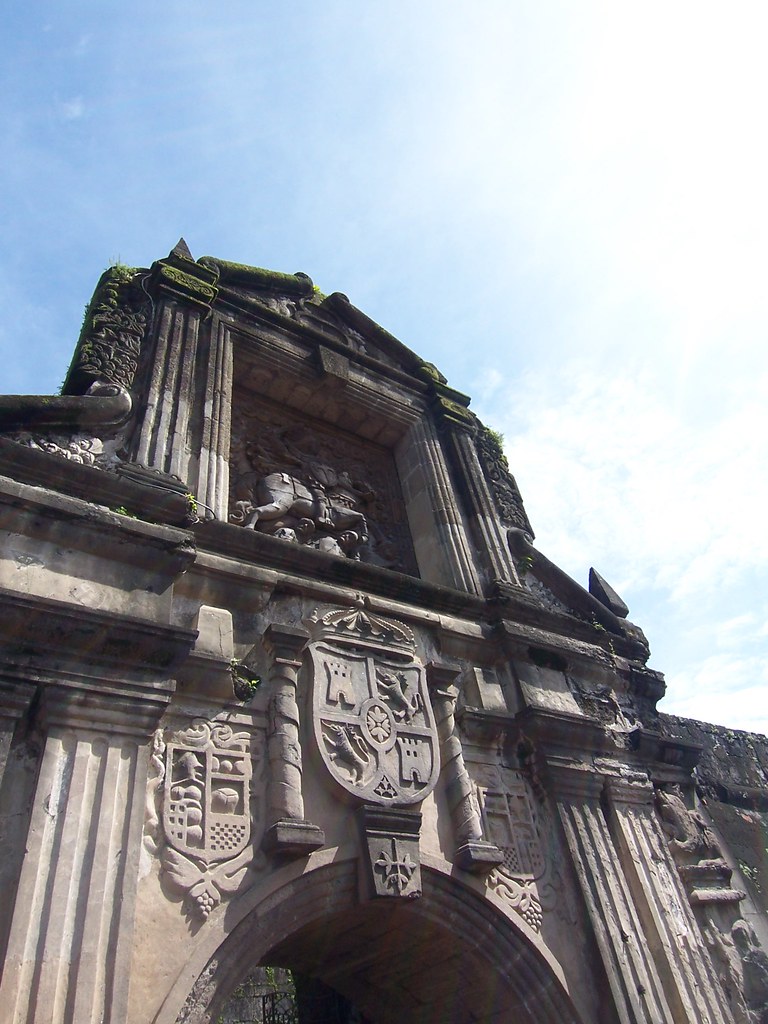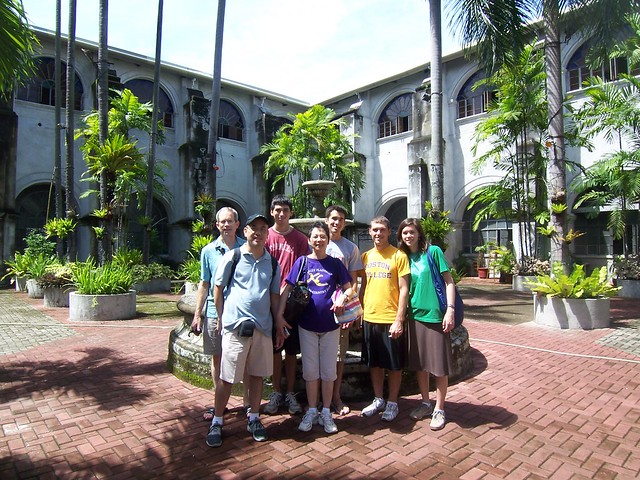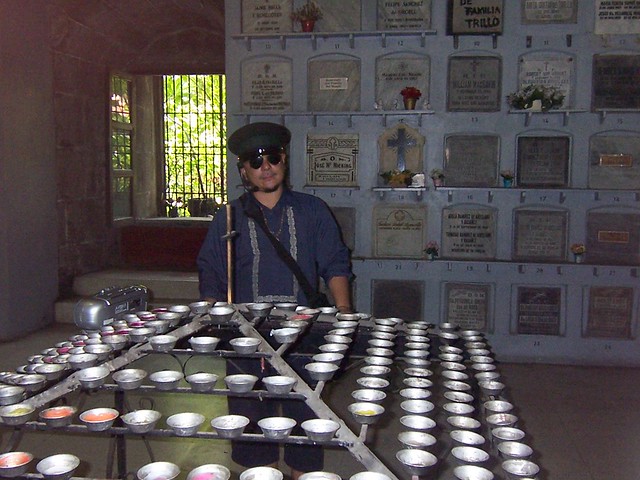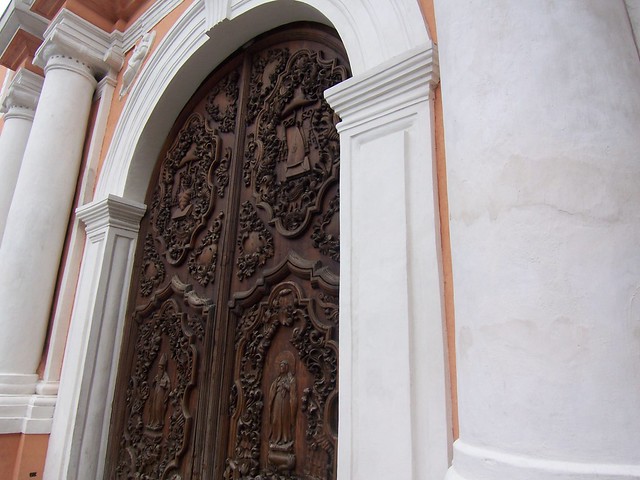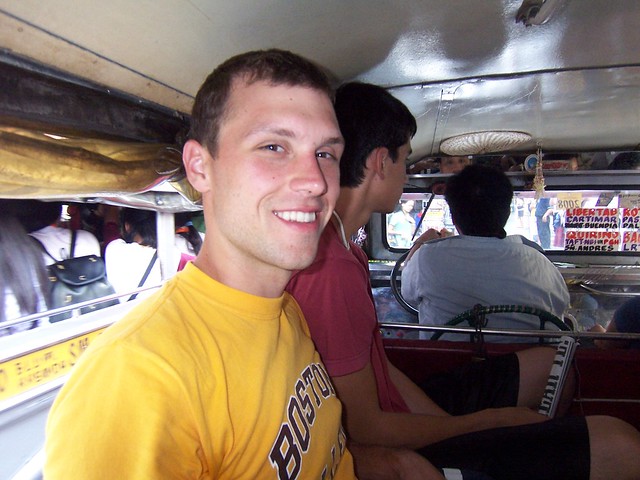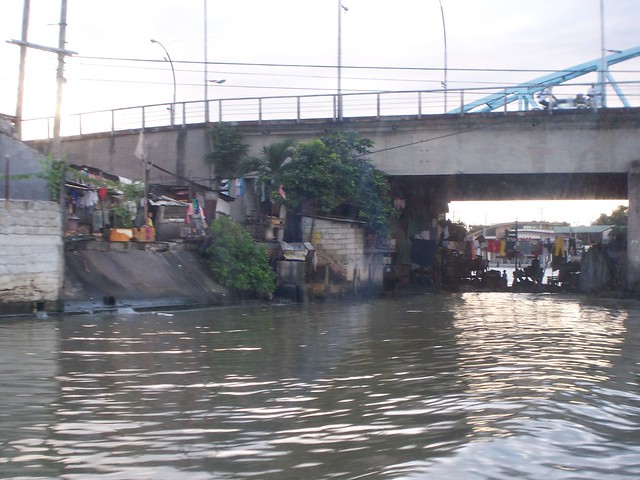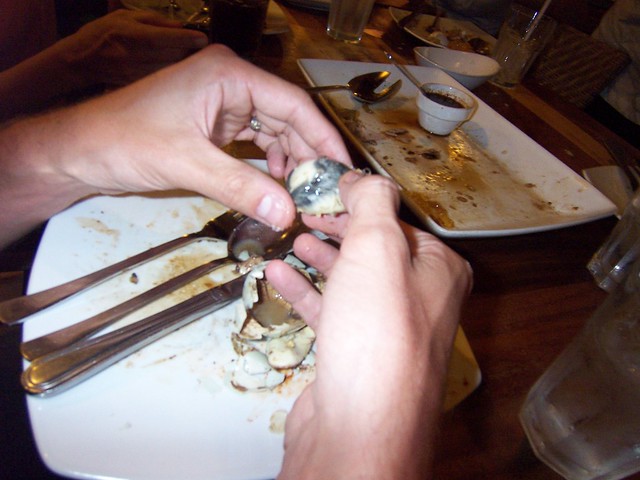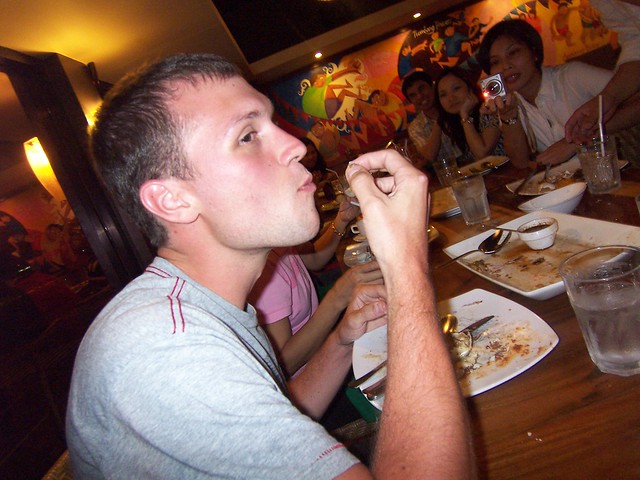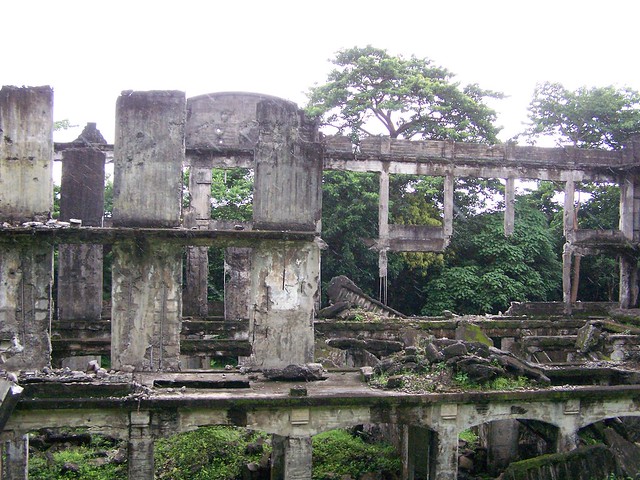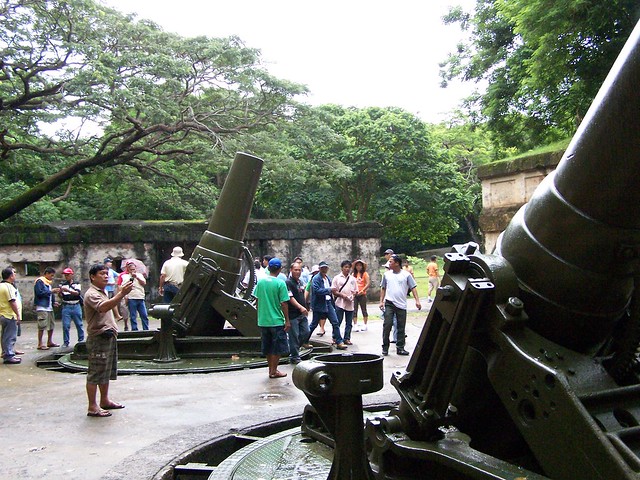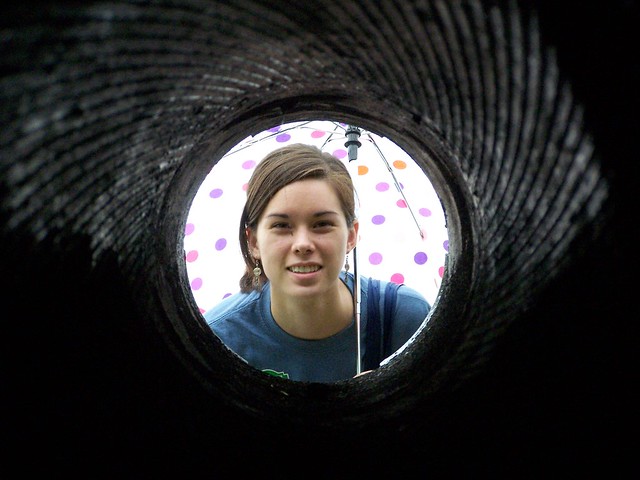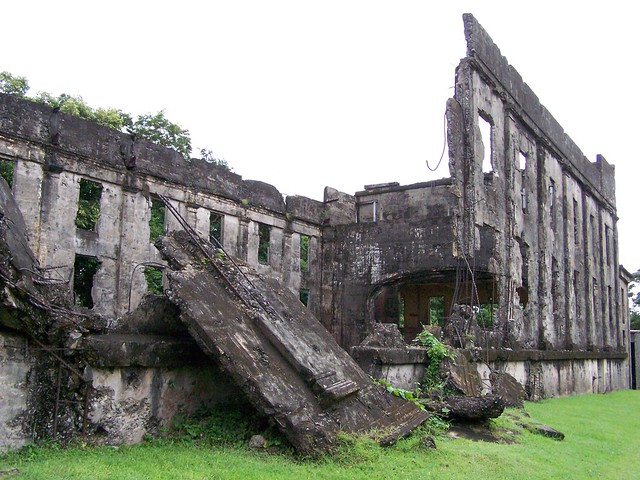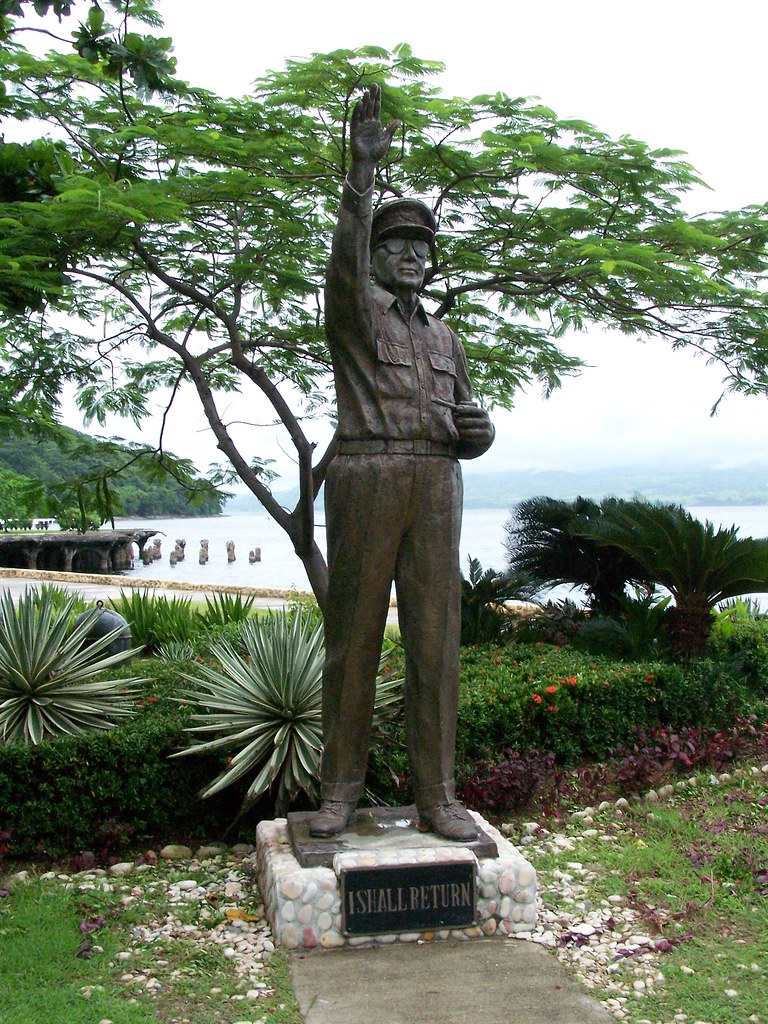These two days since getting back to Manila have been filled with history and culture. Yesterday we woke up early for the Carlos Celdron "If These Walls Could Talk" tour of Intramuros, the historic heart of Manila. Carlos was a fantastic tour guide, and we learned so much history of Manila and the Philippines, from it's days as a Spanish holding through the destruction of Manila during WWII.
Influenced by José Rizal's writing in the late 1800s, The Philippines started a revolution for freedom from Spain and from the control of the Spanish Catholic clergy. But instead of independence, the islands were given to the United States as part of the treaty to end the Spanish-American War. Thanks to it's location, Manila became a beautiful metropolis, mixing the best of all the cultures with which it came in contact, earning the title Pearl of the Orient. In WWII the Philippines fell to Japanese control, and Manila was destroyed by the Allied Forces bombing the Japanese, who refused to surrender. Whether or not the Allied Forces made the right decisions in the Philippines is for better informed minds to decide — the devastation of history and culture was tragic, yet the Japanese atrocities to the Filipino people were great. I'm very thankful to have these new perspectives of my half-country and it was fascinating to see the remaining historic beauty of Manila.
After the tour, we explored Intramuros on our own, then took the scenic route back to Makati. Ian experienced his first jeepney ride.
The jeepney ride took us to the Pasig River ferry, which we rode back to Makati. We saw new sides to Manila, from the Malacañan Palace (the President's home, which we couldn't photograph) to the makeshift homes under bridges.
That evening, we went out for a big family dinner at a restaurant serving traditional Filipino foods. I tried just about everything, even black rice (rice with squid ink and squid bits). Ian was even more adventurous and partook in balut, as a sort of family initiation. Balut is a fertilized duck egg. My cousins were nice and didn't get ones that were too old, so it wasn't as weird and crunchy as it could have been. Kuya Ryan demonstrated for Ian. First you make a good sized hole in the top of the egg and drink out the juice.
Then you peel it open and eat the inside. Yes, the black part in this photo is the baby duck's wings.
mmmm.
This morning we were up early once again, to catch the boat to Corregidor Island, in Manila Bay. This island was the location of the US military base prior to WWII. During WWII it fell to the Japanese, then was recaptured by the Allied Forces. Most of the ruins are still intact, and the island is now open for tours. It's most famous as the place General MacArthur uttered his famous words "I shall return." The island was especially interesting in the context of our newly learned history, via Carlos.
It was strange to think how many people died on this island. And despite all of the reminders of the violence, it was a beautiful and peaceful place.
After two early mornings, we're exhausted and are taking some much needed rest back at the condo. We do have more photos on Flickr, so you can keep resting in front of your computer and check them out!

